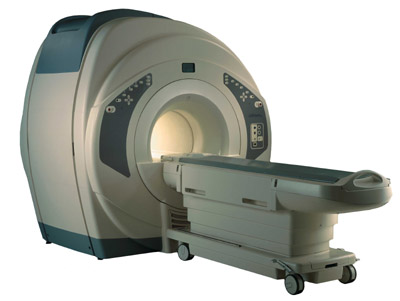The use of technology to help a humans body is something mandatory now a days. It would be almost impossible for doctors do diagnose problems within a body if it weren’t for modern day technology. From fixing a broken bone to seeing diseases that can spread inside a body- is all covered. It is unbelievable to find that more technologies are being made to discover more about the internal body of individuals. My blog today will include various types of technological devices that help doctors solve problems- literally inside a human being. In addition, a Canadian contributor will be included.
Our world today most definitely solves problems with the use of technology. Of course there are cell phones, iPods, and lap tops that are not necessarily needed but more wanted by humans, but there are X-rays, MRI’s, and something newly introduced called MRS (Magnetic Resonance Spectroscopy) that greatly benefit us now, and in the future.
X-Ray:
 When I was about 7 years old, I fractured my ankle. This was the first time I’ve ever actually encountered the use of an X-ray. I was put in a room by myself, and there they x-rayed my ankle. After waiting for a while, the picture of my skeletal ankle appeared and it was certain I had fractured my ankle.
When I was about 7 years old, I fractured my ankle. This was the first time I’ve ever actually encountered the use of an X-ray. I was put in a room by myself, and there they x-rayed my ankle. After waiting for a while, the picture of my skeletal ankle appeared and it was certain I had fractured my ankle.If it were not for the invention of the X-Ray, the doctor, my mom and I would not be able to be completely certain that I had fractured my ankle. X-Ray technology allows doctors to see through the human tissue and to the skeletal bones of a human. This great piece of technology can easily examine broken bones, cavities and swollen objects. Also, there are modified x-ray procedures that can be used to look at softer tissues such as lungs, blood vessels and intestines.

It is surprising to find that such a great device was created completely by accident. In the year 1895, a German physicist named Wilhelm Roentgen made the discovery while experimenting with electron beams in a gas discharge tube. He basically found that a fluorescent screen in his lab began to glow when the electron beam was turned on even when it was surrounded by heavy black cardboard. He assumed that the board was blocking most of the radiation. Roentgen put different objects between the tube and the screen, and the screen still glowed. Finally, he put his hand in front of the tube, and saw the silhouette of his bones projected onto the fluorescent screen. TA-DA!!!!! The x-ray was created!
Without the X-Ray, broken bones, swollen objects and small cavities would not be identified. Think of a world without X-rays! If it weren’t for this miraculous piece of equipment, my ankle would’ve taken even longer to heal!
MRI:
 Magnetic Resonance Imaging is a medical test that helps physicians diagnose and help treat medical conditions. It uses a strong magnetic field, radio frequency pulses and a computer to produce extraordinarily detailed photos of organs, soft tissues, bones and almost all other parts of inside a human being.
Magnetic Resonance Imaging is a medical test that helps physicians diagnose and help treat medical conditions. It uses a strong magnetic field, radio frequency pulses and a computer to produce extraordinarily detailed photos of organs, soft tissues, bones and almost all other parts of inside a human being.
The MR pictures allow physicians to evaluate different parts of the body better, and determine the presence of any particular diseases that may not be seen by X-rays, ultrasound or computed tomography (CAT scan).
It would be difficult to determine diseases spread throughout the body without MRI. This creation evaluates almost all the parts in the body; heart, liver, biliary tract, kidneys, spleen, bowel, pancreas, adrenal glands, pelvic organs - including the reproductive organs in the male and the female, blood vessels (MR Angiography) and lastly, breasts. It is amazing to find that one machine can evaluate so many things within a human.
The MRI can, in addition diagnose diseases and problems that can harm and easily arise within a human internally or simply monitor treatment for particular conditions. The many problems it can see are:
can, in addition diagnose diseases and problems that can harm and easily arise within a human internally or simply monitor treatment for particular conditions. The many problems it can see are:
- Tumors in the chest, abdomen or pelvis
- Heart problems
- Blockages or enlargements of blood vessels
- Diseases of the liver
- Cysts and/or solid tumors in the kidneys
- Tumors and other abnormal problems in the reproductive organs - Causes of pelvic pain within women
- Breast cancer MRI’s typically look like the picture given (right), but others are designed to not completely surround the body. Also, some are open on the sides, oppose to being closed- this comes in handy when patients dislike the feeling of being in closed area, or if patients are kind of obese.
MRI’s typically look like the picture given (right), but others are designed to not completely surround the body. Also, some are open on the sides, oppose to being closed- this comes in handy when patients dislike the feeling of being in closed area, or if patients are kind of obese.
MRS:
I actually never heard of MRS (Magnetic Resonance Spectroscopy) until I started my research for this bio blog. I came across MRS as I was looking for information about MRI. MRS is a new technology that determines how much fat is in a human’s pancreas. It is assumed that this imaging device can somehow help determine an individual’s risk for diabetes.
about MRI. MRS is a new technology that determines how much fat is in a human’s pancreas. It is assumed that this imaging device can somehow help determine an individual’s risk for diabetes.
MRS is closely related to MRI due to the fact that MRS gives more of a detailed description of what may be happening in your body. An example given is; A MRI can help a doctor determine that you have tumor, but a MRS can help a doctor determine what kind of tumor it is and what kind of tissue it contains. Thus, finding answers about the pancreas of whether a patient has a high or low risk of having diabetes. MRS is the new technology that can prevent individuals from having diabetes by offering therapy before it is too late.
Canadian contributor:
As I was trying to find a Canadian contributor, I stumbled upon a man in my Biology Textbook that I feel, has really helped with the "technology" doctors use today. Although this man has no created a device, he has helped introduce something new to the world of science.
 A man who goes by the name of Dr.Michael Sefton is a key person for today's health. Dr.Sefton is the director of the Institute of Biomaterials and Biomedical Engineering at the University of Toronto. He has created something called a "heart in a box" and it may probably be the answer to many of the transplants done today. "Heart in a box" is basically a transplantable heart grown in the laboratory.
A man who goes by the name of Dr.Michael Sefton is a key person for today's health. Dr.Sefton is the director of the Institute of Biomaterials and Biomedical Engineering at the University of Toronto. He has created something called a "heart in a box" and it may probably be the answer to many of the transplants done today. "Heart in a box" is basically a transplantable heart grown in the laboratory. The first thing that has to be done in order to create this heart is; make scaffolding that the cells will grow around- usually biodegradable plastics are used. After, the scaffolding and cells are placed in a bioreactor- which is like a incubator that maintains constant body temperature and provides the nutrients and oxygen required to suppor cell division. Cells eventually stick together to form living tissues because of the proteins within the cell.
Now, although this does not create a complete heart - it has successfully created components of it.
Without a system of various technologies, doctors and physicians would have a great deal of difficulty when it comes to diseases, bacterias, swelling and broken bones. Think of what would happen if it weren't for the MRI, MRS and X-Rays...how would anything get fixed. The human body is an important thing, and with the use of these many technologies, our body stays healthy and unbroken.
Work Cited:
http://www.radiologyinfo.org/en/info.cfm?pg=bodymr
http://www.biomedcentral.com/1471-2342/8/3/
http://www.ncbi.nlm.nih.gov/pubmed/16148633
http://www.nlm.nih.gov/medlineplus/ency/article/003337.htm
http://www.dailymotion.com/video/xatw69_new-technology-helps-doctors-measur_news
No comments:
Post a Comment